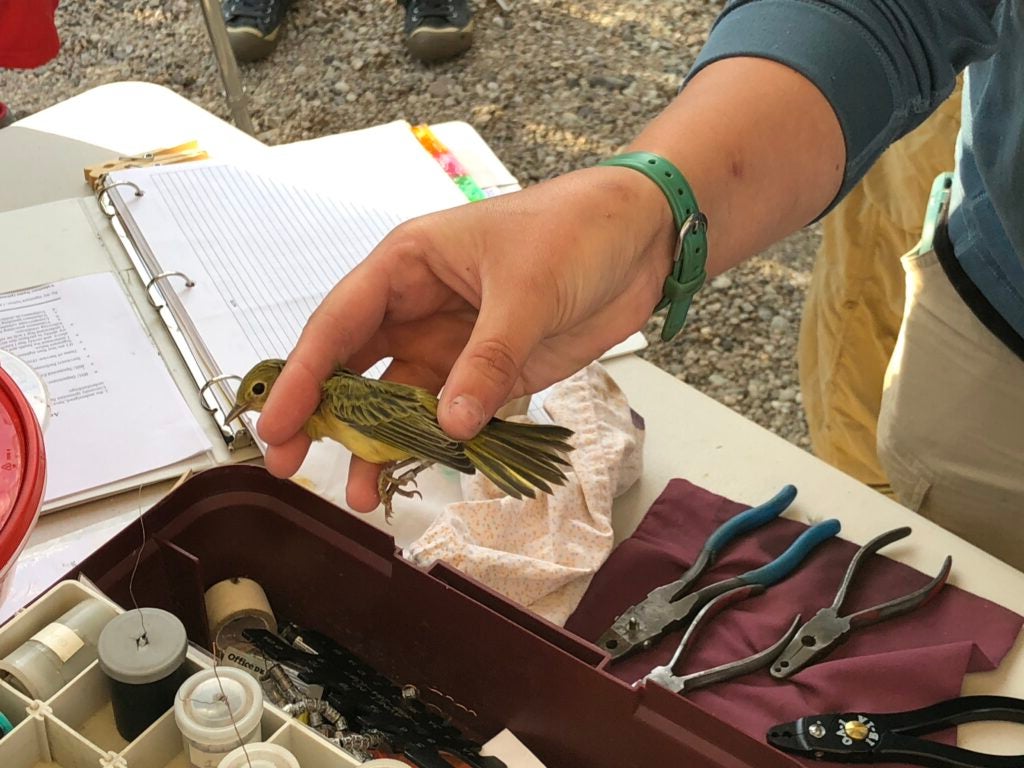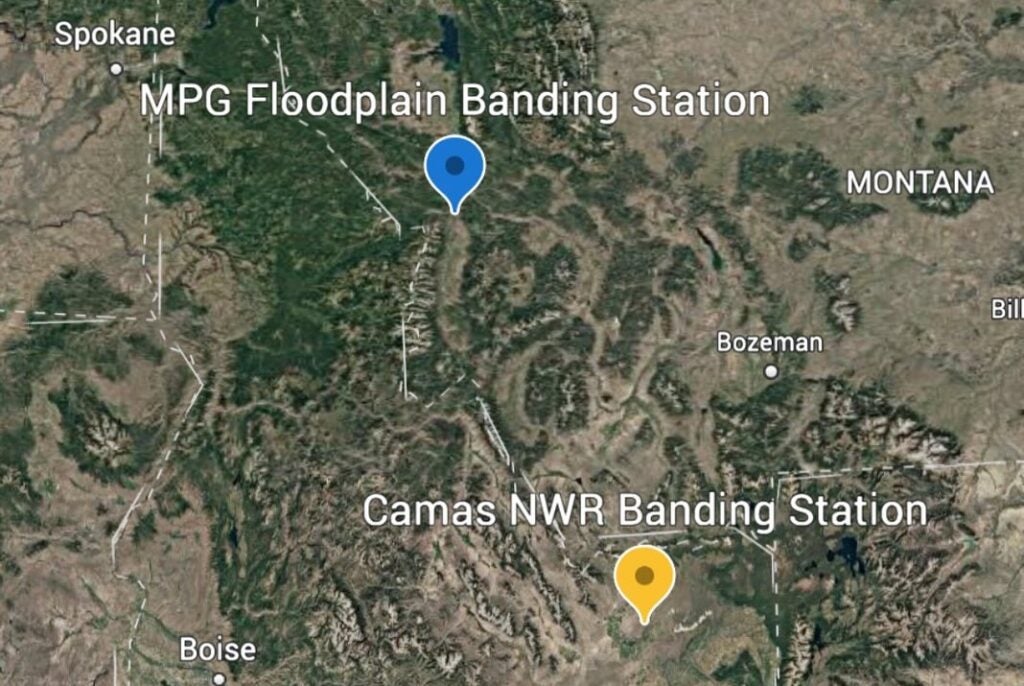Whenever we catch a previously banded bird, we always hope for a “foreign” recapture—a bird banded by another research project in a distant location. These encounters provide valuable insight into migration routes, stopover sites, and breeding locations.

Recently, we received exciting news about a female Yellow Warbler that we recaptured this fall at Camas National Wildlife Refuge! After submitting our data to the Bird Banding Lab, we learned that she was originally banded by our friends at the University of Montana Bird Ecology Lab (UMBEL).
A Remarkable Journey
This warbler’s story is a rare and exciting example of how banding data connects researchers across projects.

Here’s what UMBEL had to say about the recapture:
“It’s not often that banded birds get “recaptured,” or caught again, at a different banding station from where they were originally banded. This Yellow Warbler, however, is an exception. This female was recaptured 208 miles from where she was first banded as a hatch-year bird (a bird born during the year banding takes place)!
Banders from the University of Montana Bird Ecology Lab (UMBEL) first captured this bird at MPG Ranch in July of 2023. She was measured, aged, and banded with a unique 9-digit aluminum band issued by the federal Bird Banding Lab. She was then recaptured the following spring at Camas National Wildlife Refuge in Idaho by banders from Intermountain Bird Observatory (IBO). Because of the unique band number, researchers at IBO were able to find out where this bird was initially captured!
Yellow Warblers are migrants that breed in North America and fly south to Central and northern South America for the winter season. This bird was most likely born on or near MPG Ranch in the Bitterroot Valley of Montana, flew south for the winter, and was recaptured on her first return journey to breeding territory in the intermountain west. Using details in her feathers, researchers at IBO aged her as a second-year bird, which was corroborated by the original banding data.
Information from recaptured birds, such as this one, sheds light on species’ ranges, flight paths during migration (including stop-over sites used to refuel), and preferred breeding and wintering locations. Humans can then use these data points to prioritize and better conserve important habitat for complete bird life cycles.
*All birds handled under proper USGS federal and state permits, and by trained biologists.”
Why This Matters
This Yellow Warbler’s journey underscores the importance of maintaining healthy stopover sites—places where migrating birds can rest and refuel on their long journeys. Understanding these movements helps scientists better protect critical habitats across continents.
Big thanks to our partners at UMBEL and the Bird Banding Lab for helping us piece together this warbler’s incredible journey!
Want to learn more? Be sure to check out our winter newsletter article for a deeper dive into our work at Camas NWR!